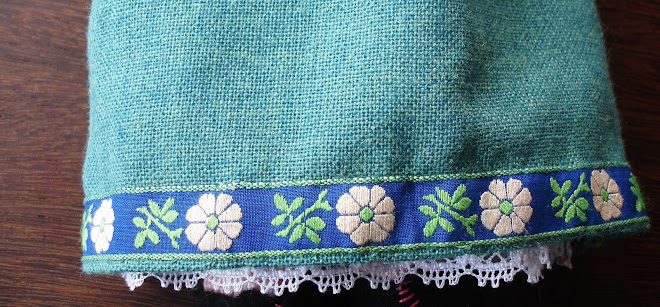
Capucha
 stitching on a Capucha
stitching on a Capucha

Imagens tiradas de Artes e Tradições de Viseu, Direcção-Geral da Divulgação,1982. Terra Livre.
Nos finais dos anos 1970´s e princípios dos 80´s, a Direcçaõ-Geral da Divulgação e o Ensino Básico via Centros de Formação de Professores de varias cidades colaboraram para publicar um levantamento de artesenato e património cultural da sua propria região. Este de Viseu veio ter as minhas mãos (lovely Luís) este fim de semana e tem sido a minha leitura últimamente.
Dream: I would like in my next life to come back as an ethnographer, preferably in the Portugal of the 1950´s or maybe even a bit further back to the early 1900's (if it is not too much to ask). I would love to take off and drive around the country to remote places and find craftspeople and ask them how do they make this piece, what is the process, and where did you learn how to do it? I would record it all and put it in a big book with drawings and pictures and transcribe the actual conversations I had with them. »»»AWAKE««««««
The strength of this book is just that. Conversations tape recorded and then transcribed with the spelling out of the pronunciation of the person talking gives you a sense of how the artisan commununicated, after all, also an important part of cultural identity. But first one had to gain the trust of those whom one wanted to converse with which was not always an easy task.
Above, I highlighted the section of the capucha , a covering used throughout Portugal for protection from the elements. Handmade from artesenal wool and decorated with stitching which varied from village to village and tailor to tailor, the capucha was a vital piece of pastoral and rural costume.
an excerpt:
Continuando caminho, estrada fora, tentei encontrar Ester. É uma povoação onde nem um veículo motorizado poderia passar. Para se lá chegar tem que se subir, a pé, um pouco da encosta da serra, primeiro por umas escadas artificiais, depois por umas naturais na própria pedra à custa de tanto se passar lá. Por fim, quando cheguei ao cimo, deparei com imensas casas em cima umas das outras, feitas exclusivamente de pedra e sem o mínimo de condições. As estradas, também feitas de pedra, com alturas diferentes, não devem ter mais de um metro de largura.
As pessoas olhavam para mim desconfiadas. Tentei dialogar com elas; umas sem me responderem, corriam para suas casas e fechavam-se lá dentro, outras cochichavam entre si e depois diziam-me que não usavam capuchas, fechando-me a seguir a porta na cara. Por fim, quando já desanimada voltava para trás, resolvi tentar mais uma vez a minha sorte, indo bater à porta do alfaiate da terra; fui relativamente bem recebida para espanto meu e mostraram-me uma capucha primorosamente feita, cujo desenho do pesponto, bastante curioso, se mostra na página anterior.
»»»A propósito, não quero perder Galerias da Vida Rural (Alentejo).


17 comentários:
Mary, you can still do it! You'd be perfect at it. Or perhaps you could compile a lot of this information into your own volume of writing. You know who to call to design your book when it's ready ;-)
I agree with Frances :D Seria um sucesso!
Óptimo post!
thank you...giddy just thinking of it ;)))))
*
Mary
e se fores ver as galerias da amazónia vais reparar com certeza nas rodilhas feitas pelos índios. tirei uma fotografia, depois logo a ponho no flickr ;)
oh! maravilha :))
e sabes ...li também neste mesmo livro que as senhoras usavam quando fosse preciso uma ponta do capucho para fazer uma especie de rodilha...:))
alias a capucha
As coisas que esta mulher vai buscar para nos acordar para o passado:)
Obrigada!
Gosto muito de te ler!
Eu compro o teu livro! E tenho a certeza de que muitos o farão!
Faz falta o levantamento desses costumes e tradições, bem como a renovação dos mesmos. Artesanato português contemporâneo, precisa-se!
Há um ror de coisa estranhas e lindas por descobrir naquela região do Distrito de Viseu...
Fazes bem em pesquisar e divulgar. Até parece que estão a esconde-las de propósito :)
Um beijinho
This seems perfect for you to do! Absolutely!! It is important to gather knowledge that may be forever lost if noone takes care of it!
One day I´ll send you a picture Mary, of the cape I´m using now as it gets cooler. I bought it in a little shop in some village in Portugal long time ago. It is very , very warm. And all along I have thought this is a cape used by sheperds.
Well, maybe a little difficult getting back to 1950 or 1900... but there must be still much interresting worth recording?
oh Olga! you might have a Capucha then does it go to your knees or upper thighs? and do you remember where you bought it? hugs for you and Noak
:))
Boaventura
Sempre achei aquela zona enigmatica....e sim muito interessante!
bj
Mary
Yes, that´s the length of it. Black on one side. Grey, striped on the other side. Two buttons. No arms. The hove (for the head) can be buttoned of. Don´t remember now where I bought it...
What a wonderful post. I really can imagine you collecting conversations with these artesans. Oh please do follow your dreams. and what a book. you must go to montemuro. bj*
this is very beautiful dream and great adventure! picking the traces of the history is the huge challenge. Only in this way we can learn, how the world works...
Enviar um comentário